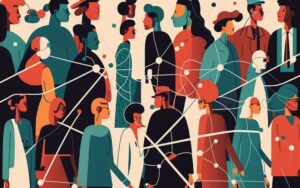
April 22, 2020; Guardian and New York Magazine, “Intelligencer”
The onslaught of COVID-19 has pushed our nation’s healthcare system past its limits. It has taxed available human and physical resources in a manner not seen in modern times. At the most basic level, it has stretched our capacity to provide basic personal protective equipment (PPE), ventilators, and other critical equipment. We have been challenged to meet these needs or endanger the lives of sick people and those coming forward to care for them.
Dr. William Schaffner, a professor of preventive medicine and infectious diseases at the Vanderbilt University School of Medicine, explains to the Guardian that the expectation was that we had a national strategy for responding to a calamity and that the federal government would take the lead to ensure critical supplies were available and in the right place at the right time.
You could almost use the image of an orchestra. The federal government was the conductor and it kept all of the disparate instruments playing in harmony. That, at the very least, was a role we would have anticipated where the federal government was more active.
Unfortunately, that’s not how these last months have turned out. Rather, we have had chaos and confusion, a situation that has pitted hospitals, health care organizations, cities, and states against each other and, most surprisingly, against the federal government in a competition to acquire supplies and save lives. This is how Dr. Andrew W. Artenstein of Baystate Health in Springfield, Massachusetts, described his experience in a letter published in the New England Journal of Medicine:
Our supply-chain group has worked around the clock to secure gowns, gloves, face masks, goggles, face shields, and N95 respirators. These employees have adapted to a new normal, exploring every lead, no matter how unusual. Deals, some bizarre and convoluted, and many involving large sums of money, have dissolved at the last minute when we were outbid or outmuscled, sometimes by the federal government.
To get what he needed, Artenstein made a clandestine trip with two camouflaged trailer trucks to an out-of-the-way location. Once there, he had to convince FBI agents, when they arrived, to allow him to take the supplies to his hospital.
Sign up for our free newsletters
Subscribe to NPQ's newsletters to have our top stories delivered directly to your inbox.
By signing up, you agree to our privacy policy and terms of use, and to receive messages from NPQ and our partners.
Like individual hospitals, states have also been forced to go out on their own. As a spokesperson for Illinois governor J.B. Pritzker, who rented two planes to secretly pick up supplies, explained to the Chicago Sun-Times, “The governor didn’t want to be more open about the shipments because we’ve heard reports of Trump trying to take PPE in China and when it gets to the United States.”
Unless your hospital’s board members can draw on personal wealth and power to overcome the obstacles before them, you may end up at the back of the line. Consider Kenneth G. Langone, “the conservative billionaire chair of New York University’s Langone Medical Center,” who, according to the Guardian, was “personally dealing directly with Michael Roman, the CEO of 3M.” Now, contrast that with what Leon Bell, a senior policy analyst for the New York State Nurses Association, describes for organizations without this personal influence in their leadership: “[Public hospitals] did not have the capacity, for example, which some of the private networks did, to call one of their billionaire board members, and say, ‘Hey, you know this guy who owns this factory in China who makes N95 masks? Can you tell him to ship us a plane load?’” In the end, clout was more important than need, and New York’s public hospital system went with orders unfilled and materials diverted to other buyers.
Smaller organizations with even fewer resources face even greater disadvantages. Tiffany Love, the chief operating officer at a 25-bed hospital in Nevada, told the Guardian she had a source who could get her supplies she needed, but would have to take 10 million masks at $5.20 apiece.
“We’re desperate,” Love says. “We want to get PPE for our staff, but these are insane requests. When will we ever use 10 million masks? Probably not in 10 years.”
The current lack of leadership has turned the federal government into just another competitor in a life-and-death marketplace, one with the ability to exert inordinate influence when it desires. As David Wallace-Wells observes in New York Magazine, “It has started to appear as though, in addition to abandoning the states to their own devices in a time of national emergency, the federal government has effectively erected a blockade—like that which the Union used to choke off the supply chains of the Confederacy during the Civil War—to prevent delivery of critical medical equipment to states desperately in need.” It’s difficult to comprehend; Wallace-Wells calls the policy “inexplicable and indefensible.”
Love expresses the steep moral challenge being faced in the absence of effective coordination: “You might have the money to outbid someone else, and then it means people in their community are going to die because you outbid? I committed my life to try to save lives, not to outlast the competition.”
This is a waste of human and fiscal resources when they are sorely needed. Worse, it risks the safety and well-being of healthcare providers and their patients. It is time the federal government takes responsibility and does what only it can.—Martin Levine












